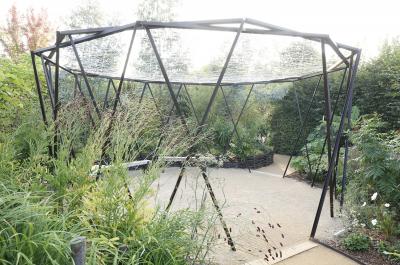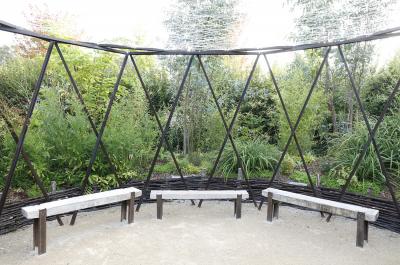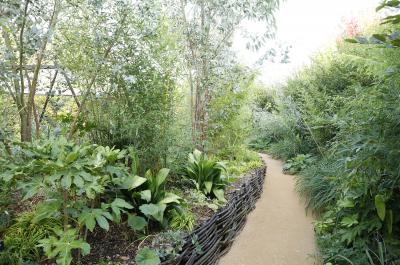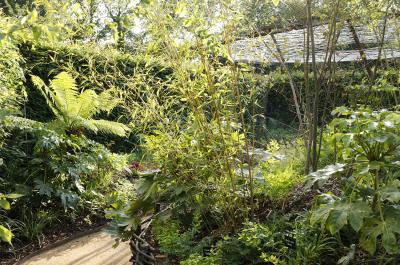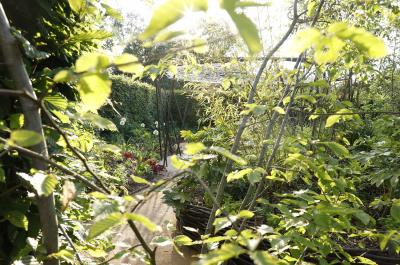14. Attrape-rêve
published at 12/03/2018
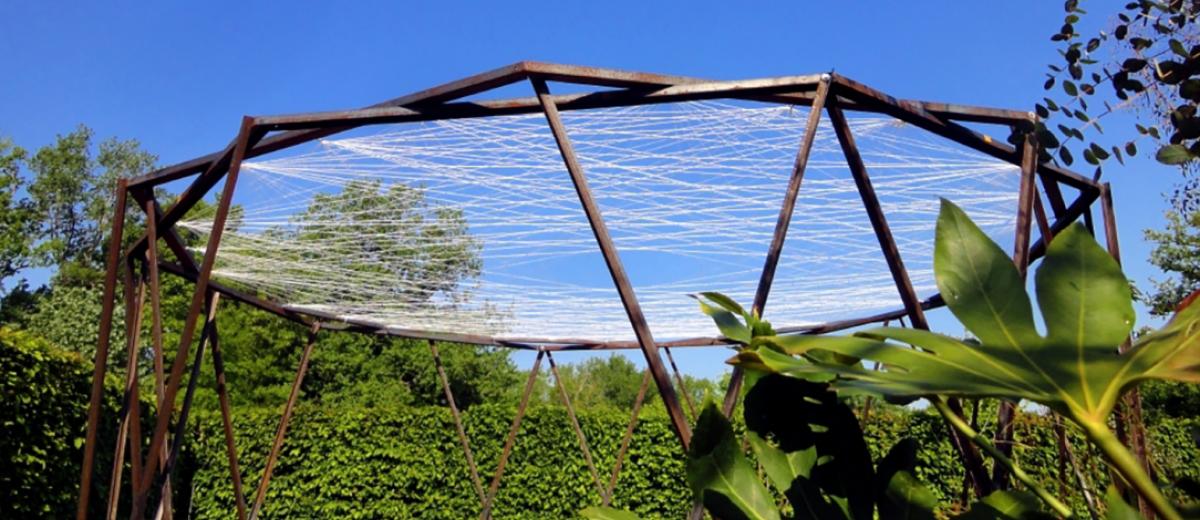
In the lore of the Native American Ojibwe people, a dreamcatcher is a mystical artefact that captures bad dreams and only allows good ones to pass through it to the sleeper.
This garden presents the contrast between dream and nightmare, between dream and reality. The borderline is sometimes hardly discernible. Thoughts often escape us and it would be a hard job to provide them with form.
The mysterious landscape into which visitors are drawn questions their fears and desires. Those repressed thoughts that are expressed through dreams and which we do not always take the time to pay attention to. Private thoughts, which belong to oneself alone, deserve at least a few minutes of our time.
So make your way into this luxuriant forest, bursting with life and evil spirits. Explore your thoughts. From shadow to light, reflect a while and take refuge beneath the web. Listen to that sweet silent melody. If you come in the early morning, a few drops of dew may gather at your feet and will perhaps whisper to you the stories told during the night.
DESIGNERS
Sophie RUYER, landscape architect, and the POURQUOI PAS ?! Collective
FRANCE
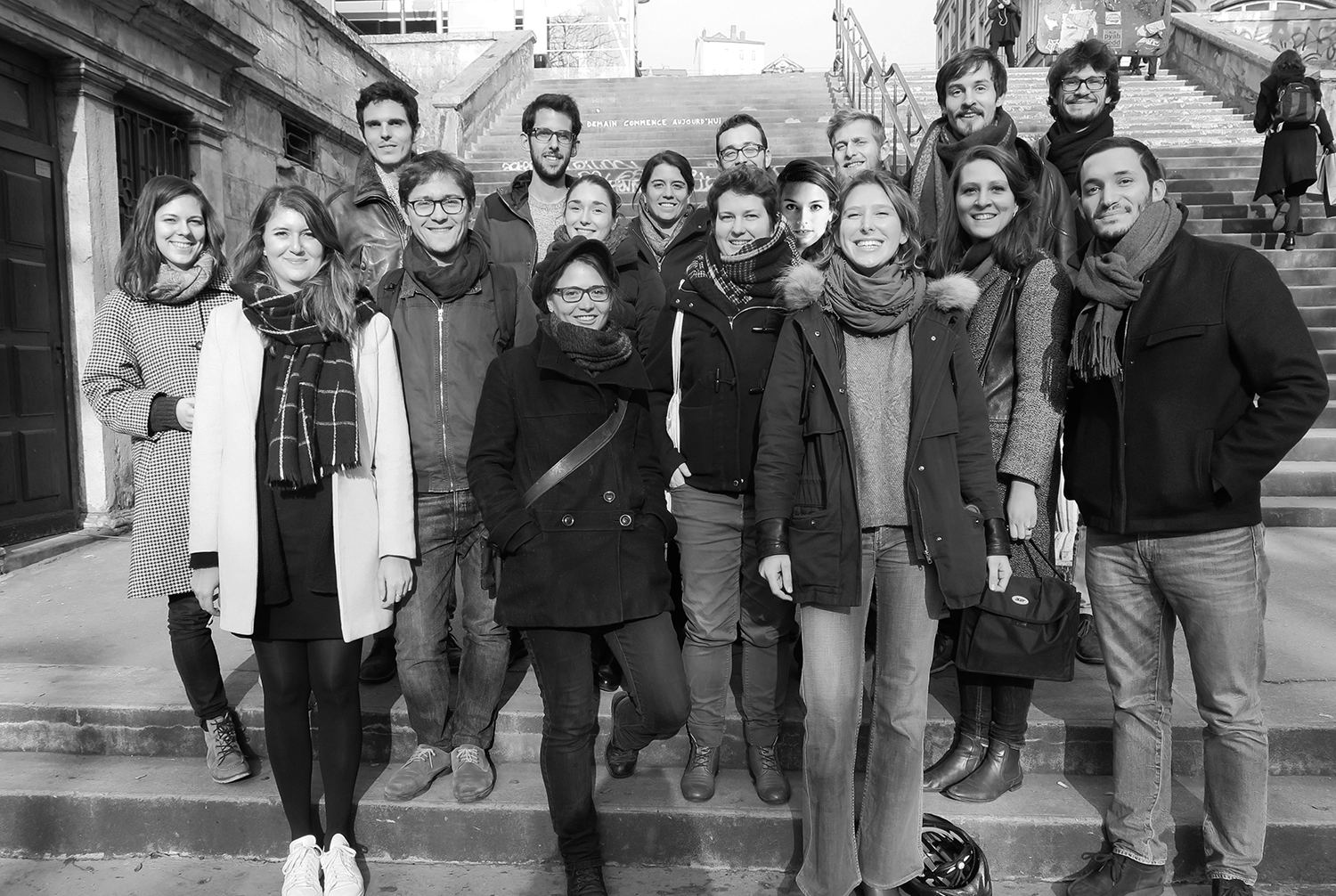
Since 2014, the Pourquoi Pas !? Collective has comprised architects from the Lyon, Grenoble, Strasbourg and Marseille National Higher Schools of Architecture (ENSAs), engineers from Lyon’s National Institute of Applied Sciences (INSA), landscapers and graphic artists, brought together by a shared determination to promote architecture as a vector for transmission and collective projection. As an association with “Law 1901” status, the collective develops projects from design to construction, enriching the entire process with unplanned input from various of its members. Taking this approach, projects are jointly designed wherever possible, even jointly constructed with democratic participation.
For the last three years, Pourquoi Pas !? has been working on sites that evolve as urban renewal takes its course, experimenting with transmission and collection targeting a variety of audiences, including associations, schools and local inhabitants, with a view to tackling the subject of townships in the widest sense.
With considerable field experience and purposeful hybridisation of skills acquired from common initial training, the collective is now much in demand for its expertise in running “open” jobsites, encouraging participation on the part of the general public and facilitating awareness-raising workshops for schoolchildren, as well as for its experience in temporary occupation processes, in particular by means of “architectural permanence”.
Over the course of 2016, the collective co-founded a third place, Bricologis, consisting of shared offices and a manufacturing workshop, in Mas du Taureau in Vaulx-en-Velin, where it has now moved.
The collective’s structure is of variable geometry, gradually incorporating the skills of the individuals who set it going. Although each member contributes their own skills and unique experience, the group’s overall organisation ensures that they do not restrict themselves to their specialities. Such reciprocity ensures that both the collective and the individuals that comprise it advance professionally-speaking through openness and sharing of knowhow.
This virtuous circle extends to its day-to-day practice, making the open jobsite a collective, convivial and educational act where the experience and skills of professionals, users and curious bystanders alike is intermixed without distinction.
Determined not to waste resources, the collective focuses on reuse of materials and employment of local geomaterials. Ephemeral installations, event scenographies, exhibitions, temporary public furniture and facilities, and landscape projects: the collective has positioned itself at local and micro-level so as to be able to control the entire process from design to delivery. A hands-on approach to building motivates its members to work together alongside others ready and willing to lend a hand, limiting participation filters to the maximum.
Landscape architect Sophie Ruyer graduated from Lyon’s School of Architecture and Versailles’ National Higher School of Landscape. While studying architecture, she developed an interest in architectural heritage and its promotion through landscape: her end-of-studies project bore on the Gallo-Roman ruins on the Fourvière Hill in Lyon. Convinced that architecture and landscape go hand in hand, she decided to continue her education at Versailles’ National Higher School of Landscape, where she went on with her research on the connection between architectural heritage and landscape and submitted her degree dissertation, a study bearing on the requalification of the fortified region of Belfort and the place this piece of heritage has in today’s landscape. Since 2016, she has worked in Lyon as project manager on therapeutic garden competitions, city parks, shared gardens inside housing blocks, and public spaces.
